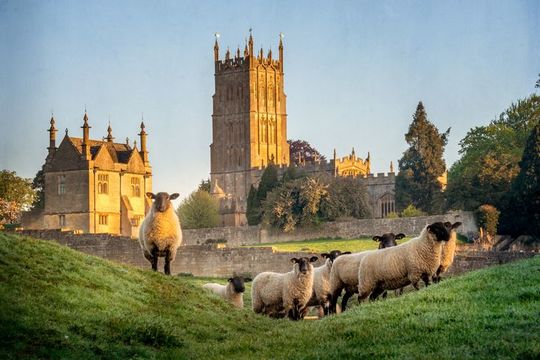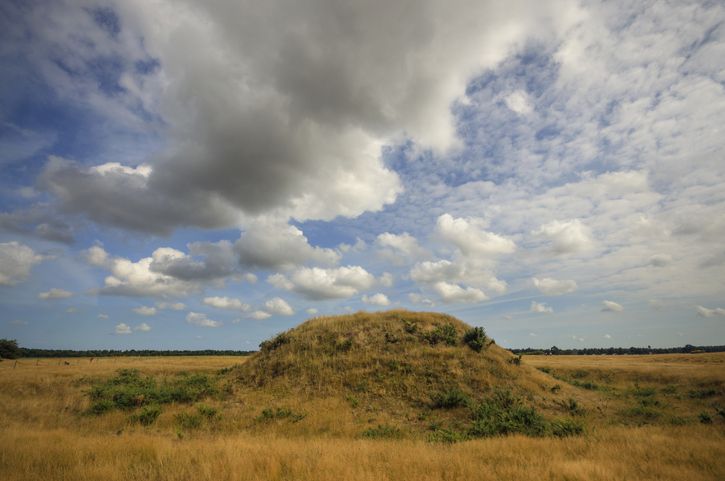
Scott Reeves takes a look at one of the most interesting periods of British history.
The Dark Ages have been unfairly named. This fascinating but often overlooked period of British history saw the reign of King Alfred, the flourishing of the church, the Viking invasion, and the creation of the Kingdom of England. Archaeologists and historians are constantly making new discoveries about what life was like after the Romans left but before the Norman Conquest.
The curtain is slowly being drawn back to reveal a surprisingly complex society that flourished in an era we usually dismiss as little more than a mysterious interlude. Why not shed a little light on the Dark Ages with a trip to one of these fascinating places?
West Stow, Suffolk
The Dark Ages were so-called due to a lack of documentary records for historians to scrutinize. With few words from our ancestors, students of the past must rely primarily on archaeological remains instead. This is illustrated neatly at the Anglo-Saxon village near West Stow. Subsequently abandoned and flattened into farmland, future generations forgot the village even existed until Victorian antiquaries stumbled across it when they probed the ground close to the modern village.
More than 150 years of research has now revealed the footprint of 70 wooden buildings. Eight have been recreated by archaeologists as they try to deduce the techniques used by their Anglo-Saxon ancestors and the results of their experiments form the centerpiece of an open-air museum in what is now West Stow Country Park. The sunken buildings and halls are small spaces – the families who lived in them must have been snug – but the craftsmanship required to construct the warm thatched roofs and neat plank walls indicate that this was once a highly skilled and close-knit community.
Step over each threshold and imagine what life was like for its inhabitants. Question the knowledgeable re-enactors about the traditional crafts they demonstrate. The on-site museum and gallery displays everyday objects pulled from the soil in the excavations including jewelry, tools and weapons.
See more in the rebuilt Saxon and Viking houses at the Ancient Technology Centre at Cranborne in Dorset.
Offa's Dyke
After the Romans left, Britain was anything but a united kingdom as it fractured into a number of small, often feuding kingdoms. For more than 200 years, the most prominent of the petty royals were those who ruled Mercia and controlled much of England south of the River Humber. Yet the troublesome Welsh still refused to submit.
King Offa of Mercia delineated his border with the wild west in the middle of the 8th century when he ordered the construction of a vast bank and ditch between his land and the Kingdom of Powys. The earthwork that bears his name is now Britain’s longest ancient monument. The simple structure retains an air of mystery as it runs through a breathtaking landscape. Exactly how was it built, and when, and why?
Some of the best-preserved parts of the bank and ditch run past Knighton, a town that straddles the Welsh-English border and is the location of the newly refurbished Offa’s Dyke Centre. Try to seek out the three-mile section near Lydney in Gloucestershire too. For those who want a longer challenge, a 177-mile long-distance footpath keeps close company with the impressive earthwork across eight English and Welsh counties. Most people take around two weeks to walk the whole thing; several companies offer can arrange nightly accommodation and luggage transfers.

Offa's Dyke
Jarrow Hall, Northumberland
Northumbria was near the fringe of the known world during the Dark Ages, but it was a kingdom that punched above its weight. A powerful realm stretching from Sheffield to Edinburgh, it was home to a host of holy men who embraced the ways of the Christian faith and shaped Britain’s religious beliefs. Among them was Bede, a monk at Jarrow monastery, whose writings saw him hailed as the father of English history.
Bede’s old monastery now lies in ruins but his memory lives on at nearby Jarrow Hall, a Georgian country house saved from demolition to host a museum dedicated to Bede. Formerly known as Bede’s World, this fascinating but once insolvent museum has been granted a new lease of life under new ownership.
Familiarize yourself with the venerable scholar, the church to which he dedicated his life and the northern kingdom he called home. However, do not spend so much time inside the museum that you miss the chance to wander through the reconstructed working Anglo-Saxon farm, complete with rare-breed animals and enthusiastic costumed re-enactors.
Sutton Hoo, Suffolk
Edith Pretty probably expected a few interesting objects to emerge from the soil when she employed an archaeologist to excavate the ancient burial mounds near her home at Woodbridge in Suffolk. What she could not have imagined was the discovery of two Dark Age cemeteries, one of which is probably Britain’s most famous burial.
Although the timber had long since rotted, archaeologist Basil Brown spotted the outline of a ship in the soil and deduced that an oak vessel had been hauled from a river and pulled into a trench. The body inside had similarly decomposed, but the magnificent regalia carefully placed around it suggest that the deceased was once a prominent leader. Most historians tend to believe it was Raedwald, King of East Anglia.
The real Sutton Hoo treasures are on display at the British Museum in London, but the replicas in the newly refurbished exhibition hall at Sutton Hoo probably do a better job of putting the objects into context. The royal burial chamber is cleverly reconstructed and offers a glimpse into a royal funeral. The displays around it try to reconstruct the kingdom that Raedwald would have ruled when he was alive. Don’t miss the chance to tour Tranmer House, the place Edith Pretty called home. You can even explore the estate after hours by staying overnight in one of three apartments tucked away on the upper floors.

Sutton Hoo
Staffordshire Hoard
Nobody knows why a stash of treasure was buried in a remote area just off an old Roman road in the seventh century. We will also never know why they did not come back to retrieve it. It lay undiscovered for more than 1,000 years until an amateur metal detectorist stumbled across the find of a generation in 2009.
The Staffordshire Hoard, as it soon became known, reveals a lot about the Dark Ages. This was an era when skilled artisans created stunning objects in metal. The tiny gold swirls on an animal figurine must have required supremely steady hands. It was also an era of war. Of almost 700 items identified, around two-fifths are fittings from weapons, most of them swords. The hoard may have been part of Mercia’s royal treasury, the spoils of battle earned against rivals in East Anglia and Northumbria. Since many of the items are twisted as though forced into a small space, they may have been deposited in the ground at speed.
There is nothing to see of the discovery site – it remains a farmer’s field just off the A5 near Lichfield – but the hoard still resides in old Mercia, split between the Potteries Museum in Stoke and Birmingham Museum.
Jorvik Viking Center, North Yorkshire
The monks of Lindisfarne Priory had a rude awakening one morning in 793. Longships appeared on the horizon, the first raiders from across the North Sea who would spend the next two centuries sacking and pillaging. The Viking age had begun.
It is a story familiar to fans of Netflix’s The Last Kingdom and Amazon Prime’s Vikings. Find out the real history at the Jorvik Viking Centre in the middle of York, a city that became the capital of the Viking lands in Britain. The visitor attraction was built on the site of an archaeological investigation at Coppergate, a dig that revealed a well-preserved slice of the Viking metropolis. The York Archaeological Trust recreated what its experts found, peopled it with costumed mannequins (the faces of which are based on actual skeletal remains) and set up clever carriages to rise through the scene in. It is certainly atmospheric. The figures speak in Old Norse and the temperature rises close to the forge. The smell even becomes more realistic (to put it politely) near the privies.
When the carriage comes to a halt, a museum area displays finds from the excavations and explains how they were used to create the time warp. The Disney-like ride may not be everybody’s cup of tea, but there is little doubt that the Viking Center succeeds in putting the spotlight onto the often-ignored Dark Ages.





Comments